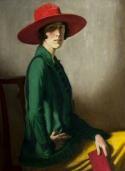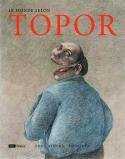Art Of The Day Weekly
#468 - from 13 April 2017 to 19 April 2017
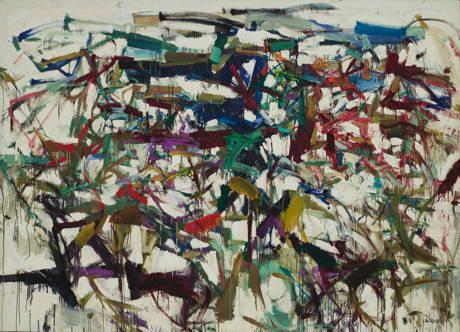
Joan Mitchell, Ladybug, 1957. Oil on canvas, 197.9 x 274 cm. The Museum of Modern Art, New York. Purchase, 1961. © Estate of Joan Mitchell.
IN THE AIR
Ladies, do you have an abstract mind?
NEW YORK – When one thinks of abstract art, a tidal wave of names comes to mind, such as Kandinsky, Malevich, the Cubists, including Picasso, Braque and Gris, then Mondrian, the Abstract Expressionists with Pollock, Rothko, de Kooning, then possibly the Japanese Gutai group or Soulages. These artists represent many countries, but alas, not all genders: as is often the case in the history of art, women have the smaller share. They definitely contributed their part to the movement, but aside from Natalia Goncharova, Vieira da Silva or Joan Mitchell, they all suffer from what is prudishly called “a lack of reputation”. The MoMA, which loves to play the iconoclasts now and then –like recently by hanging works by artists from the Muslim countries banned by Trump -, opens the case with a clear title, “Making Space”. The 100 works by some forty artists, created between the end of WWII and the sixties, are all from the MoMA’s collection, and many are recent purchases – just to set things straight! Next to local artists Lee Bontecou or Lee Krasner, there is a good representation from outside of the US border, with Lygia Pape (Brazil), Magdalena Abakanowicz (Poland), Carol Rama (Italy), Louise Bourgeois (of French origin), Louise Nevelson (of Ukrainian origin) or Agnes Martin (of Canadian origin). A real international movement!
• Making Space: Women Artists and Postwar Abstraction at the MoMA, from 15 April to 13 August 2017.
EXHIBITIONS
What about queers?
LONDON - The Tate Britain is not far behind, with a rather audacious exhibition on queer (homosexual or transgender) art in Great-Britain, going quite far back in time. At a time when certain American states, like North Carolina, are discussing bathroom bills for transgenders, this exhibition should be encouraging. The exhibition is presented to celebrate the 50th anniversary of the partial decriminalisation of male homosexuality in Great Britain. We all have in mind the infamous sentence inflicted on Oscar Wide in 1899 for what was then considered a crime, as he had to tear tow in Reading gaol with his delicate hands while he was forbidden to read or write for two years. The door of his cell is exhibited here. It can easily be understood that artists who represented these illegal love stories showed a lot of courage. The selection that dates back to the 19th century, includes Aubrey Beardsley, Duncan Grant, Oliver Messel, Edward Burra and Angus McBean, among others.
• Queer British Art at the Tate Britain, from 5 April to 1 October 2017.
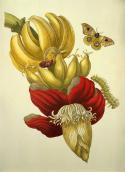
Maria Sibylla Merian, Banana, from Metamorphosis insectorum Surinamensium, Amsterdam 1705, Landesbibliothek zu Dresden, Leipzig, Frankfurt a.M., © bpk / Staatsbibliothek zu Berlin / Ruth Schacht.
Merian, a flower woman
BERLIN – To continue on this theme of the under-representation of women in the world of art, which a few years ago motivated the Guerrilla Girls to demonstrate in a rather vociferous way, we can claim a few important exceptions. Aside from the obvious case of Artemisia Gentileschi, who would never have imagined she would be used as a cover, of Rosalba Carriera and Mme Vigée-Lebrun, we can also mention Sibylla Merian (1647-1713) among the pioneers of gender equality. She excelled in the 17th century in a quasi-scientific field, botanical and natural illustrations. She was an independent woman and after getting a divorce in 1692, at the age of 45, she undertook an adventurous trip nearly 10 years later to Surinam where she gathered abundant material, in particular in the multi-coloured world of insects. The exhibition makes visitors (re)discover another major figure in this discipline, Barbara Regina Dietzsch (1706-1783) whose minute images shine on black paper.
• Maria Sibylla Merian and the Tradition of Flower Illustration at the Kupferstichkabinett, from 7 April to 2 July 2017.
Kiss, baiser, bacio, beso
CALAIS – Following the liberalisation of mores, the decriminalisation of homosexuality and of adultery, it would seem the representation of love acts – and that of the kiss in particular – has also experienced a quantitative explosion. It is most probable, even if some of the most emblematic images were produced at periods that were “a priori” rather prudish. It is the case of The Kiss by Rodin (1887), which is the point of departure of the exhibition. It traces a full century of emotions on the tips of lips, up to Ange Leccia and Douglas Gordon.
• Le baiser dans l’art at the musée des Beaux-Arts, from 8 April to 17 September 2017.
ARTIST OF THE WEEK
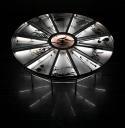
Rosa Barba, Stage Archive, 2011, 35mm film, perpex, neon lamps, engines, control, installation view at Mart Museum, Rovereto 2011, © Rosa Barba.
Rosa Barba: echo from the archives
Women artists seized a long time ago to be a rarity. Three hundred years after Sibylla Merian, Rosa Barba, born in 1972, is not as isolated in a man’s world. She does have in common with her famous predecessor a double culture: Merian was German-Dutch while Rosa is German-Italian, and this enriches their way of looking at things. Barba explores a theme that is as old as the world but she renews it through new storing techniques and dematerialization, i.e. archives. By using video as a media and based on concrete sites, such as American landscapes or the port of Rotterdam, she questions our intervention on the world and the conservation of the traces we leave.
• Rosa Barba is shown at Secession (Vienna) from 6 April to 25 June 2017.
OPENINGS OF THE WEEK

LE MAUVAIS OEIL
18 April 2017 - MARSEILLE - Friche la Belle de Mai
Nemoto Takashi (photo) and Ebisu Yoshikazu are two manga creators who have kept an underground and subversive stance
BOOKS
Topor is back
Twenty years have gone by since he died, but like other troublemakers who stepped down too soon, such as Reiser, he is still very present. His caustic sense of humour continues to sting us, as he is continues to be as subversive as when he was with us. Roland Topor (1938-1997), the son of Polish Jewish immigrants, never forgot the years of collaboration with the Nazi invader and during which he had to hide with his family. They taught him to maintain a healthy mistrust of the human race. As a drawer he practiced among the best, at the satirical magazine Hara-Kiri, but he did not find his vocation in current issues. His work, which was cruel, Surrealist, dreamlike and mostly “panic” – according to the term invented by Jean-Michel Ribes - shows the absurdity of man’s existence. For him the injured, deformed, lecherous human beings in small pieces are destiny’s miserable toys. This beautiful catalogue (exhibition at the Bibliothèque nationale de France until 16 July 2017), unfortunately deprived of an index, reminds the viewer that Topor, a true jack-of-all-trades also delved in theatre, cinema (la Planète sauvage with René Laloux), or simply in literature and he saw creation as a project of collective friendship. The list of his accomplices - from Pol Bury to Jacques Sternberg, from Jodorowsky to Ribes – is proof of this.
• Le monde selon Topor, BnF Editions/les Cahiers dessinés, 2017, 242 p., €42.

